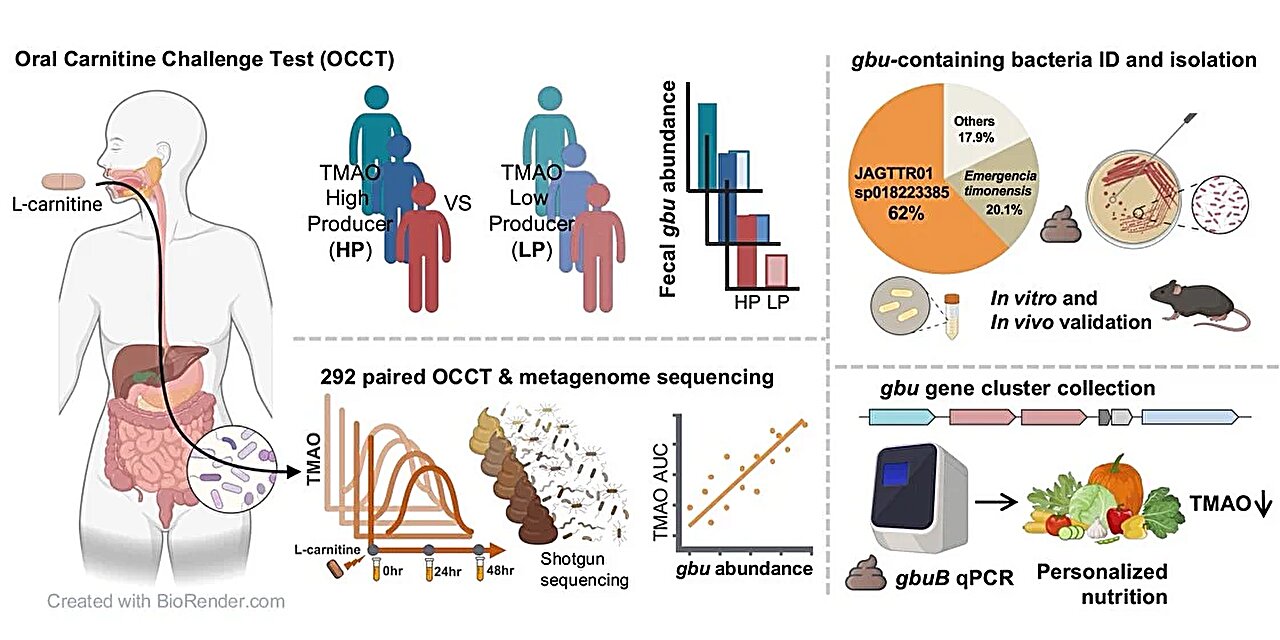Gut microbial metabolism of L-carnitine, leading to the production of trimethylamine N-oxide (TMAO), links red meat consumption to cardiovascular risks. Microbial genes, including cntA/B, the cai operon, and the gbu gene cluster, have been implicated in converting L-carnitine into TMA(O). However, the key genes and microbes remain underexplored.
Using the oral carnitine challenge test (OCCT) to measure TMAO production and identify phenotypes, researchers compared microbial gene abundance between low- and high-TMAO producers across three cohorts. The researchers' findings consistently showed the gbu gene cluster, not cntA/B or the cai operon, as significantly enriched in high-TMAO producers. The paper is published in the journal Gut Microbes.
Multi-omic analysis of 292 paired datasets demonstrated a strong positive correlation between fecal gbu genes, particularly gbuB, and TMAO production. Notably, gbu gene abundance increased with L-carnitine supplementation and decreased with a plant-based diet.
They identified and isolated JAGTTR01 sp018223385, a previously uncultured gbu-containing bacterium, as a major contributor to TMA formation in the gut. Using anaerobic incubation and a gnotobiotic mouse model, they confirmed the role of these microbes in TMA/TMAO production. Finally, researchers developed a qPCR-based method to quantify fecal gbuB, validating its correlation with L-carnitine-induced TMAO production via OCCT.
These findings highlight gbu-containing gut microbes as key drivers of TMAO increases following L-carnitine intake and suggest their potential as biomarkers or therapeutic targets for personalized nutrition.
More information: Wei-Kai Wu et al, Gut microbes with the gbu genes determine TMAO production from L-carnitine intake and serve as a biomarker for precision nutrition, Gut Microbes (2024). DOI: 10.1080/19490976.2024.2446374


